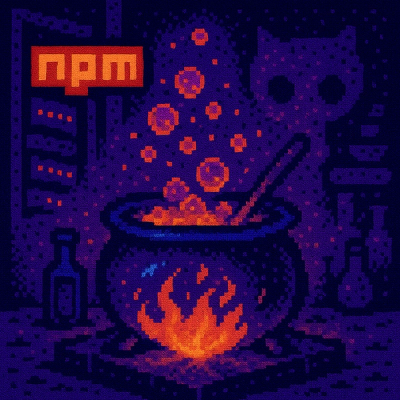
Security News
How Enterprise Security Is Adapting to AI-Accelerated Threats
Socket CTO Ahmad Nassri discusses why supply chain attacks now target developer machines and what AI means for the future of enterprise security.
django-taggit-autosuggest
Advanced tools
Disclaimer: This project is unmaintained since I don't use it myself anymore and I did not find a maintainer within the user base so far. However, I'm happy to accept pull requests!
*** Credits *** This project is directly based on those projects: * Alex Gaynor, https://github.com/alex/django-taggit * Ludwik Trammer, http://code.google.com/p/django-tagging-autocomplete/ * Jeremy Epstein, https://github.com/Jaza/django-taggit-autocomplete * Flavio Curella, https://github.com/fcurella/django-taggit-autocomplete * Drew Wilson, http://code.drewwilson.com/entry/autosuggest-jquery-plugin
*** Installation ***
*** Settings *** TAGGIT_AUTOSUGGEST_STATIC_BASE_URL: Instead of collecting and serving the static files directly, you can also set this variable to your static base URL somewhere else. TAGGIT_AUTOSUGGEST_MAX_SUGGESTIONS (Defaults to 20): The amount of suggestions is limited, you can raise or lower the limit of default 20 using this setting. TAGGIT_AUTOSUGGEST_CSS_FILENAME (Defaults to 'autoSuggest.css'): Set the CSS file which best fits your site elements. The CSS file have to be in 'jquery-autosuggest/css/'. TAGGIT_AUTOSUGGEST_MODELS (Defaults to tuple('taggit','Tag')) The Tag model used, if you happen to use Taggit custom tagging.
*** Usage *** To enable autosuggesting Tags, just let the tagged model use TaggableManager:
from django.db import models
from taggit_autosuggest.managers import TaggableManager
class SomeModel(models.Model):
tags = TaggableManager()
To use autosuggesting Tags outside of Django Admin pages ensure that the static files are added to the template's , either hardcoded, e.g.
<link href="{{ STATIC_URL }}jquery-autosuggest/css/autoSuggest-upshot.css"
type="text/css" media="all" rel="stylesheet" />
<script type="text/javascript"
src="{{ STATIC_URL }}jquery-autosuggest/js/jquery.autoSuggest.minified.js">
</script>
or by adding the form/formset's media attribute to the template's context (this is what happens in Django Admin), e.g.
# In the view:
context.update({'media': form.media}) # or however you add to the context
# In the template:
{{ media }}
(Either way, of course, the template must also include a jQuery library.)
If Taggit custom tagging is used the autosuggested Tags can be filtered by attributes of the request object after the name filtering. To enable this the custom tag model should have a function called request_filter which takes a request object and returns a django.db.models.Q object, e.g.
from django.db import models
class MyTag(TagBase):
@staticmethod
def request_filter(request):
return models.Q(...)
There's a demo project using Grappelli bundled, you can run it and browse /admin/ using the username 'demo' and password 'demo'.
FAQs
Autosuggestions for django-taggit
We found that django-taggit-autosuggest demonstrated a healthy version release cadence and project activity because the last version was released less than a year ago. It has 1 open source maintainer collaborating on the project.
Did you know?

Socket for GitHub automatically highlights issues in each pull request and monitors the health of all your open source dependencies. Discover the contents of your packages and block harmful activity before you install or update your dependencies.

Security News
Socket CTO Ahmad Nassri discusses why supply chain attacks now target developer machines and what AI means for the future of enterprise security.

Security News
Learn the essential steps every developer should take to stay secure on npm and reduce exposure to supply chain attacks.

Security News
Experts push back on new claims about AI-driven ransomware, warning that hype and sponsored research are distorting how the threat is understood.